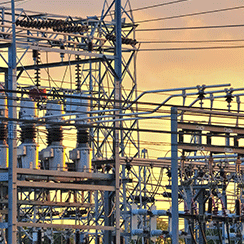Like Mario, Jose was disgruntled that power had not been restored in the island in time for the four-day weekend. “This is the last long weekend before the rains set in,” says Jose, “I was hoping to make good money this week as a buffer for the rainy days, but the island utility did not rise to the occasion.”
Mario and Jose, like all the other resort, hotel and restaurant owners in the island, are reeling from the effects of an unprecedented drop in the season’s number of tourists, which was reportedly halved. “They have shun our island, because it will not be comfortable to stay in any resort or hotel here in this condition,” says Mario. “Our resort may have small generator sets, but they are expensive to run, and they are not enough to power all our rooms, especially when air conditioners are turned on.”
Jose brings to light another challenge: “Because there is no electricity, our water stations do not function, so we do not have water in our resort. We have to supply our guests with gallons of bottled water to be used for bathing. This is adding not only to our expenses but also to their inconvenience.”
Mario and Jose’s island lost electricity when power was cut off due to a power plant accident. It has been two weeks since the incident, but power is yet to be restored. “We still hope to make the best out of what’s left of summer,” says Mario, “but in order for our businesses to be profitable again, our island has to have constant and reliable electricity again.”
Keeping islands supplied with reliable electricity comes with several challenges for island utility providers. The wide distance between the mainland and the other islands in the vicinity poses significant difficulties in moving reliable electricity, in case of unforeseen power outages. Island-based businesses can resort to running their own local power generation equipment, like small diesel gensets, or solar or wind energy systems, but their production may not be enough to fully run an entire facility, especially during peak seasons. Then, there are allied island utilities, like water, that also depend on electricity to be delivered.
As a proactive stance against unforeseen electricity challenges, island power utility providers need ready energy sources, which are available on-demand 24 hours a day, 7 days a week, to meet their customers’ energy needs. Island power utilities will find benefit in partnering with multi-megawatt temporary power providers, which can supply reliable electricity anytime and anywhere it is needed.
Temporary power plants can be deployed at a moment’s notice and can be easily installed to start supplying electricity in a few days. The generators that make up the plants are containerized, so they can be easily delivered as complete power packages anywhere in the world, even in remote islands. They are modular, which means they can fit a wide variety of site lay-outs, and do not need to be laid out on a huge space – particularly advantageous for small islands. They also have low-noise and low-emission operations, so situating them within the vicinity of hotels, resorts and tourist spots will not be a problem.
The latest-technology temporary power plants can be easily connected to the existing local power infrastructure in islands, and can generate power either in synchronization with the local power generation plants or as a standalone system. They are flexible in power and voltage, and their electricity output can be scaled up or down to meet islands’ varying electricity demand.
Temporary power solutions will not require a sizable capital expenditure and, owing to their operational reliability and fuel efficiency, will considerably reduce the operating and maintenance expenses of island utility providers.
“We can’t dwell on the lost opportunity of this past long weekend,” says Mario. “But, I hope that our island power utility provider has learned a lesson or two from this incident.”
“This extended blackout has not only affected our businesses,” says Jose. “I hope that this does not stunt our tourism industry.”
End
PRESS INQUIRIES
Altaaqa Global
Tel: +971 56 1749505























